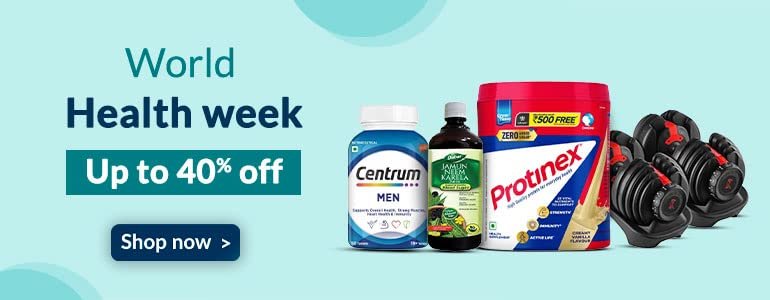Suggest an improvement
/* “function”==typeof InitializeEditor,callIfLoaded:function(o),initializeOnLoaded:function(o)gform.callIfLoaded(o),hooks:action:,filter:,addAction:function(o,r,e,t)gform.addHook(“action”,o,r,e,t),addFilter:function(o,r,e,t)gform.addHook(“filter”,o,r,e,t),doAction:function(o)gform.doHook(“action”,o,arguments),applyFilters:function(o)return gform.doHook(“filter”,o,arguments),removeAction:function(o,r)gform.removeHook(“action”,o,r),removeFilter:function(o,r,e)gform.removeHook(“filter”,o,r,e),addHook:function(o,r,e,t,n)null==gform.hooks[o][r]&&(gform.hooks[o][r]=[]);var d=gform.hooks[o][r];null==n&&(n=r+”_”+d.length),gform.hooks[o][r].push(tag:n,callable:e,priority:t=null==t?10:t),doHook:function(r,o,e)var t;if(e=Array.prototype.slice.call(e,1),null!=gform.hooks[r][o]&&((o=gform.hooks[r][o]).sort(function(o,r)return o.priority-r.priority),o.forEach(function(o)”function”!=typeof(t=o.callable)&&(t=window[t]),”action”==r?t.apply(null,e):e[0]=t.apply(null,e))),”filter”==r)return e[0],removeHook:function(o,r,t,n)var e;null!=gform.hooks[o][r]&&(e=(e=gform.hooks[o][r]).filter(function(o,r,e)null!=t&&t!=o.priority)),gform.hooks[o][r]=e)});
/* ]]> */

-
N/AFix spelling/grammar issueAdd or fix a linkAdd or fix an imageAdd more detailImprove the quality of the writingFix a factual error
-
You don’t need to tell us which article this feedback relates to, as we automatically capture that information for you.
-
This allows us to get in touch for more details if required.
-
Enter a five letter word in lowercase
#gform_wrapper_38 .gform_footer visibility: hidden; position: absolute; left: -100vw;
-
This field is for validation purposes and should be left unchanged.
/* = 0;if(!is_postback)return;var form_content = jQuery(this).contents().find(‘#gform_wrapper_38’);var is_confirmation = jQuery(this).contents().find(‘#gform_confirmation_wrapper_38’).length > 0;var is_redirect = contents.indexOf(‘gformRedirect(){‘) >= 0;var is_form = form_content.length > 0 && ! is_redirect && ! is_confirmation;var mt = parseInt(jQuery(‘html’).css(‘margin-top’), 10) + parseInt(jQuery(‘body’).css(‘margin-top’), 10) + 100;if(is_form)jQuery(‘#gform_wrapper_38’).html(form_content.html());if(form_content.hasClass(‘gform_validation_error’))jQuery(‘#gform_wrapper_38’).addClass(‘gform_validation_error’); else jQuery(‘#gform_wrapper_38’).removeClass(‘gform_validation_error’);setTimeout( function() /* delay the scroll by 50 milliseconds to fix a bug in chrome */ jQuery(document).scrollTop(jQuery(‘#gform_wrapper_38’).offset().top – mt); , 50 );if(window[‘gformInitDatepicker’]) gformInitDatepicker();if(window[‘gformInitPriceFields’]) gformInitPriceFields();var current_page = jQuery(‘#gform_source_page_number_38’).val();gformInitSpinner( 38, ‘https://geekymedics.com/wp-content/plugins/gravityforms/images/spinner.svg’, true );jQuery(document).trigger(‘gform_page_loaded’, [38, current_page]);window[‘gf_submitting_38’] = false;else if(!is_redirect)var confirmation_content = jQuery(this).contents().find(‘.GF_AJAX_POSTBACK’).html();if(!confirmation_content)confirmation_content = contents;jQuery(‘#gform_wrapper_38’).replaceWith(confirmation_content);jQuery(document).scrollTop(jQuery(‘#gf_38’).offset().top – mt);jQuery(document).trigger(‘gform_confirmation_loaded’, [38]);window[‘gf_submitting_38’] = false;wp.a11y.speak(jQuery(‘#gform_confirmation_message_38’).text());elsejQuery(‘#gform_38’).append(contents);if(window[‘gformRedirect’]) gformRedirect();jQuery(document).trigger(“gform_pre_post_render”, [ formId: “38”, currentPage: “current_page”, abort: function() this.preventDefault(); ]); if (event && event.defaultPrevented) return; const gformWrapperDiv = document.getElementById( “gform_wrapper_38” ); if ( gformWrapperDiv ) const visibilitySpan = document.createElement( “span” ); visibilitySpan.id = “gform_visibility_test_38”; gformWrapperDiv.insertAdjacentElement( “afterend”, visibilitySpan ); const visibilityTestDiv = document.getElementById( “gform_visibility_test_38” ); let postRenderFired = false; function triggerPostRender() if ( postRenderFired ) return; postRenderFired = true; gform.core.triggerPostRenderEvents( 38, current_page ); if ( visibilityTestDiv ) visibilityTestDiv.parentNode.removeChild( visibilityTestDiv ); function debounce( func, wait, immediate ) var timeout; return function() var context = this, args = arguments; var later = function() timeout = null; if ( !immediate ) func.apply( context, args ); ; var callNow = immediate && !timeout; clearTimeout( timeout ); timeout = setTimeout( later, wait ); if ( callNow ) func.apply( context, args ); ; const debouncedTriggerPostRender = debounce( function() triggerPostRender(); , 200 ); if ( visibilityTestDiv && visibilityTestDiv.offsetParent === null ) const observer = new MutationObserver( ( mutations ) => mutations.forEach( ( mutation ) => if ( mutation.type === ‘attributes’ && visibilityTestDiv.offsetParent !== null ) debouncedTriggerPostRender(); observer.disconnect(); ); ); observer.observe( document.body, attributes: true, childList: false, subtree: true, attributeFilter: [ ‘style’, ‘class’ ], ); else triggerPostRender(); } );} );
/* ]]> */

Introduction
Inotropes and vasopressors are medications typically used within critical care and anaesthetics to support blood pressure and cardiac function. Some have both inotropic and vasopressor properties, with their predominant effect varying depending on dose and mechanism of action.
Inotropes
Inotropes are medications that affect the heart’s contractility (inotropy). Positive inotropes increase the contractility, thereby enhancing cardiac output and mean arterial pressure (MAP). The majority of positive inotropes are catecholamines, which act via alpha and beta-adrenergic receptors to stimulate the sympathetic nervous system.
Examples of positive inotropic catecholamines include:
- Adrenaline
- Noradrenaline
- Dobutamine
- Dopamine
Vasopressors
Vasopressors cause vasoconstriction, which increases systemic vascular resistance and subsequently MAP.
Common vasopressors include:
- Adrenaline
- Noradrenaline
- Vasopressin
- Metaraminol
- Ephedrine
Adrenaline
Indications
Adrenaline is the initial drug of choice in anaphylactic shock and in cardiac arrest as per the Advanced Life Support algorithm.
Mechanism of action
Adrenaline is a non-selective alpha- and beta-adrenergic receptor agonist. Alpha receptor agonism mediates peripheral vasoconstriction and reduces tissue oedema. Beta receptor agonism mediates bronchodilation, positive inotropic effects, and suppresses inflammatory mediator release.
Dose
Intramuscular adrenaline dose for anaphylaxis in adults and children over 12 years old is 500 micrograms, administered as 0.5 mL of 1:1000.
IV adrenaline dose for cardiac arrest is 1 mg, administered as 10 mL of 1:10,000.
Route of administration
Adrenaline can be given intramuscularly (IM), but it can also be nebulised for airway oedema.
IV administration is only used in emergencies, i.e. cardiac arrest and refractory anaphylaxis (under expert supervision).
Side effects
Adrenaline increases heart rate, which may induce tachyarrhythmia and ischaemia. It also elevates lactate concentration during initial administration.
There is a risk of tissue necrosis and hypoperfusion to the extremities due to its potent vasoconstrictor effect.
Contraindications
No known contraindications. Be cautious in cardiovascular disease and closed-angle glaucoma.1-2
Noradrenaline
Indications
Noradrenaline is typically used to increase blood pressure and, subsequently, tissue perfusion in the critical care environment. A common use is in septic shock.
Mechanism of action
Noradrenaline is a predominant vasopressor which causes vasoconstriction, increasing systemic vascular resistance and blood pressure. It primarily acts as an alpha-1 agonist, but it also has some beta-1 agonist activity.
Dose
Noradrenaline is typically dosed by body weight. Standard dosing is 0.05 – 0.4 micrograms/kg/hr.
Route of administration
Noradrenaline is recommended for central venous administration due to the risks of tissue necrosis with extravasation of the drug.
Side effects
A significant side effect of noradrenaline is tissue necrosis if extravasation occurs, and limb ischaemia. There is also a risk of reflex bradycardia, whereby the heart rate falls in response to a rising blood pressure, caused by the baroreceptor reflex.
Contraindications
Hypertension is a contraindication of noradrenaline.3
Warnings and precautions include: mesenteric or peripheral vascular thrombosis, profound hypoxia or hypercapnia or in patients with hypotension secondary to cardiogenic mechanisms.4
Dobutamine
Indications
Dobutamine is used in those with a reduced cardiac output (e.g. heart failure or following cardiac surgery), causing cardiogenic shock.
Mechanism of action
Dobutamine is an inotrope that acts by selectively stimulating beta-1 receptors, resulting in increased inotropy and subsequently increased cardiac output and blood pressure.
Dose
The initial dose of dobutamine is 0.5 – 1 micrograms/kg/min via IV infusion, increasing to a maximum of 40 micrograms/kg/min.5
Route of administration
Dobutamine is recommended for central venous administration due to the risks of tissue necrosis with extravasation of the drug.
Side effects
Potential adverse reactions are mostly due to sympathomimetic activity, including hypertension and tachycardia. Other side effects include arrhythmias, chest pain and bronchospasm.5-6
Contraindications
Whilst dobutamine is used to increase cardiac output, it is contraindicated in many acute cardiovascular conditions, including acute myocardial infarction (as dobutamine increases myocardial oxygen demand, potentially worsening ischaemia), arrhythmias, acute myocarditis or pericarditis and severe hypertension.
Other contraindications include pheochromocytoma and hypokalemia.5-6
Dopamine
Indications
Dopamine is used in the treatment of bradycardia and shock, although it is not typically a first-line agent.
Mechanism of action
Dopamine is an endogenous catecholamine and is a precursor to noradrenaline. It acts on beta-1 receptors to increase chronotropy and cardiac output and beta-2 receptors, causing bronchodilation, as well as alpha-1 receptors to cause constriction of vascular smooth muscle and increased inotropy. Dopamine also acts on dopamine receptors to increase diuresis.
The effect on receptors is highly dependent on the dosage. Lower doses of dopamine have a greater effect on beta-receptors, while higher doses increasingly affect alpha-1 receptors.
Dose
Low doses of dopamine are 5 – 10 micrograms/kg/min, high doses are 10 – 20 micrograms/kg/min.
Route of administration
Dopamine is recommended for central venous administration due to the risks of tissue necrosis with extravasation of the drug.
Side effects
Dopamine can worsen renal function, leading to polyuria and arrhythmias.7
Contraindications
Contraindications of dopamine include cardiovascular disease and pheochromocytoma.8
There should be caution when used in conjunction with other medications, including beta and alpha-adrenergic inhibitors, haloperidol, phenytoin and tricyclic antidepressants.7
Vasopressin
Indications
Vasopressin is typically used as an adjunct to noradrenaline to either reduce noradrenaline requirements or increase blood pressure to the target MAP.
Mechanism of action
Vasopressin, also known as antidiuretic hormone (ADH), causes the contraction of smooth muscle in blood vessels via V1 receptors and acts on the V2 receptors in the collecting ducts in the kidneys to stimulate water reabsorption.
Dose
Initial dosing of vasopressin is 0.03 units/minute.
Route of administration
Vasopressin is recommended for central venous administration due to the risks of tissue necrosis with extravasation of the drug.
Side effects
Vasopressin is a pure vasoconstrictor, which means it may cause ischaemia in coronary artery disease or decrease stroke volume and cardiac output in myocardial dysfunction due to increases in afterload.
Other side effects include mesenteric ischaemia, hyponatraemia, bronchial constriction and local tissue necrosis with extravasation.9
Contraindications
Contraindications of vasopressin include chronic nephritis and vascular disease (especially coronary artery disease).10
Metaraminol
Indications
Preferred indications include anaesthetic and epidural-induced hypotension and in the management of shock when only peripheral access is available.
Mechanism of action
Metaraminol is a direct and indirect (through noradrenaline release) alpha-1 receptor agonist, resulting in vasoconstriction and an increase in systemic vascular resistance.
Dose
The dose of metaraminol is 0.5 – 10 mg/hour by continuous IV infusion, adjusted according to the response.
Metaraminol can also be administered as an IV bolus, typically 0.5 mg.
Route of administration
Metaraminol can be administered peripherally via the IV route.
Side effects
Side effects of metaraminol include reflex bradycardia, arrhythmia and headaches.
Contraindications
No known contraindications. A caution of metaraminol is that it has a longer duration of action than noradrenaline, which can lead to a prolonged rise in blood pressure.11
Reflex bradycardia
An additional caution of metaraminol is bradycardia. When administered, metaraminol increases blood pressure and systemic vascular resistance. An increase in blood pressure stimulates baroreceptors located in the carotid sinus and aortic arch. This stimulates the parasympathetic nervous system, resulting in a decrease in heart rate, known as reflex bradycardia.12
Ephedrine
Indications
Ephedrine is commonly used intraoperatively for intraoperative hypotension, particularly where there is bradycardia.
Mechanism of action
Ephedrine is a direct alpha and beta adrenergic receptor agonist, having both chronotropic and inotropic effects. Indirectly, it inhibits noradrenaline reuptake, thereby increasing the release of noradrenaline into nerve cells from vesicles and stimulating the sympathetic nervous system.
Dose
The typical IV bolus dose is 3 mg.
Route of administration
Ephedrine is given via slow IV injection.
Side effects
Side effects of ephedrine include palpitations, nausea, vomiting and headaches. Ephedrine is also arrhythmogenic and when used long term it can lead to necrosis of the myocardium, predisposing to ventricular arrhythmias.13
Contraindications
Contraindications of ephedrine are acute hypertension or tachycardia.13 General cautions include diabetes, the elderly, hyperthyroidism, ischaemic heart disease and prostatic hypertrophy.14
Reviewer
Dr Nigel Beauchamp
Consultant in Anaesthetics & Intensive Care Medicine
Editor
Dr Jamie Scriven
References
- British National Formulary. Adrenaline. Available from: [LINK].
- Dalal R, Grujic D. Epinephrine. StatPearls. 2024. Available from: [LINK]
- British National Formulary. Nordrenaline/norepinephrine. Available from: [LINK].
- Smith MD, Maani, CV. Norepinephrine. StatPearls. 2024. Available from: [LINK].
- Ashkar H, Adnan G, Patel P, et al. Dobutamine. StatPearls. 2024. Available from: [LINK].
- British National Formulary. Dobutamine. Available from: [LINK].
- Sonne J, Goyal A, Lopez-Ojeda W. Dopamine. StatPearls. 2023. Available from: [LINK].
- British National Formulary. Dopamine hydrochloride. Available from: [LINK].
- VanValkinburgh D, Kerndt CC, Hashmi MF. Inotropes and Vasopressors. StatPearls. 2024. Available from: [LINK].
- British National Formulary. Vasopressin. Available from: [LINK].
- Electronic Medicines Compendium. Metaraminol. 2025. Available from: [LINK].
- British National Formulary. Metaraminol. Available from: [LINK].
- Statler AK, Maani CV, Kohli A. Ephedrine. StatPearls. 2023. Available from: [LINK].
- British National Formulary. Ephedrine hydrochloride. Available from: [LINK].
Discover more from Bibliobazar Digi Books
Subscribe to get the latest posts sent to your email.




